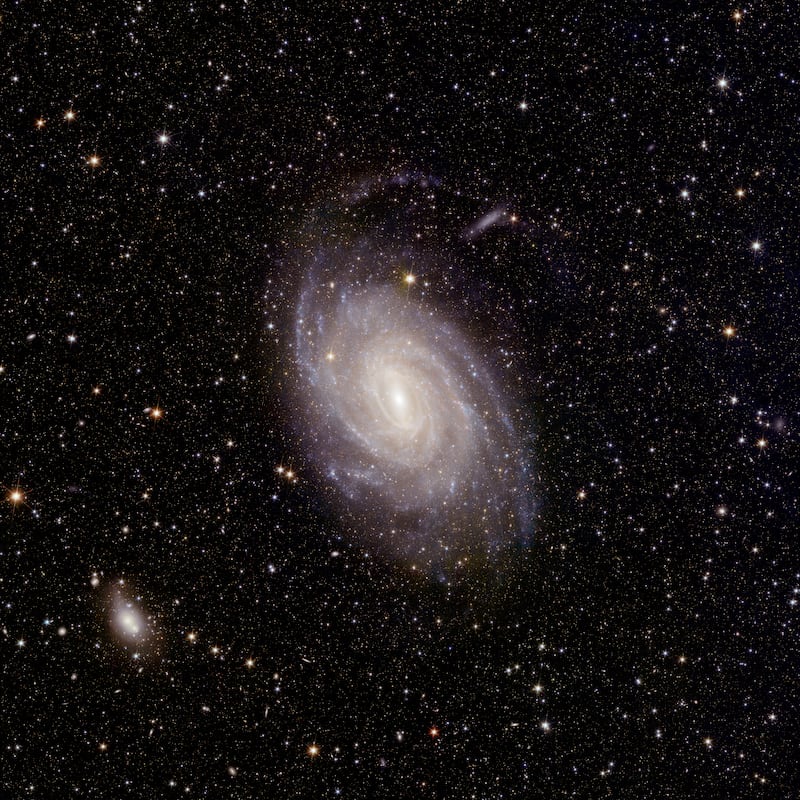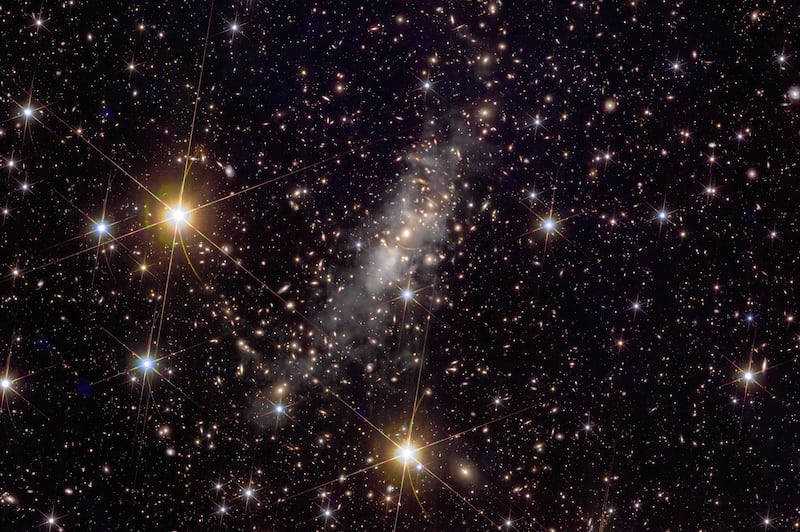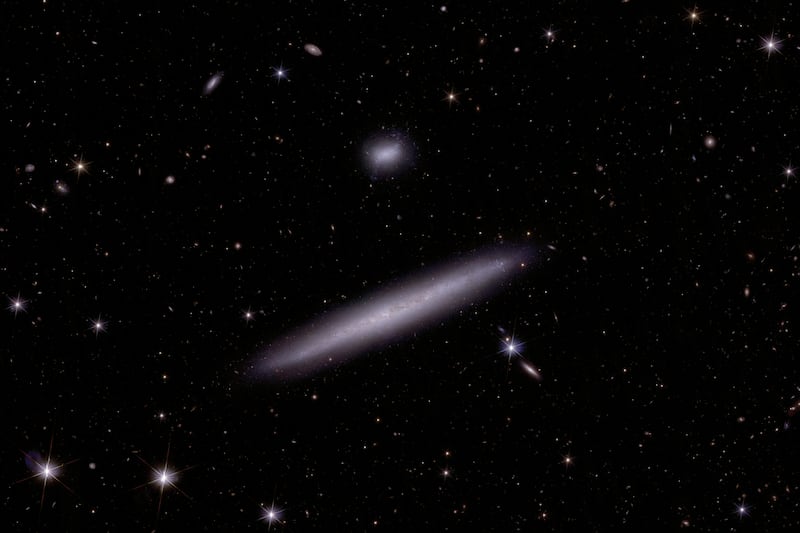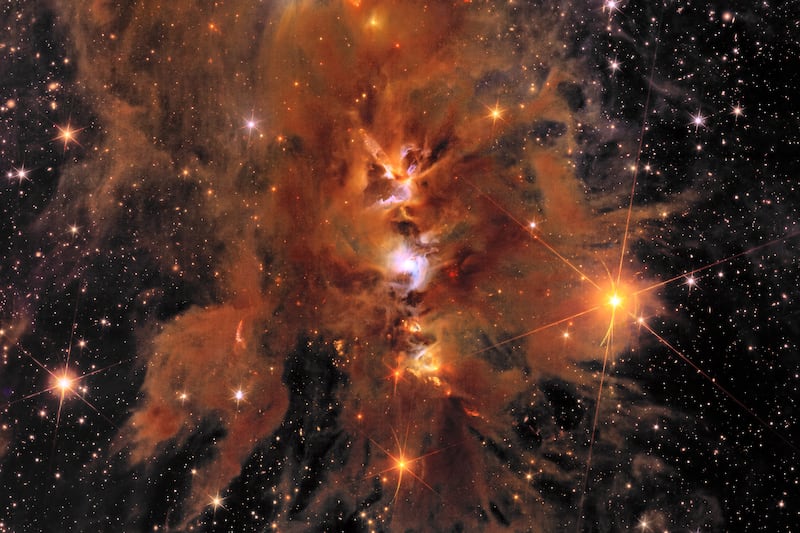Europe’s Euclid telescope has sent back the largest and sharpest images of the universe ever taken from space in its quest to unravel the secrets of the cosmos.
The five images, released by the European Space Agency (ESA) on Thursday, not only capture vast new areas of the sky in unprecedented detail but offer an exciting glimpse into the dark universe.
Astronomers have spotted dozens of rogue planets floating free from their stars after turning the Euclid space telescope to look at a distant region of the Milky Way. The wandering worlds were seen deep inside the Orion nebula, a giant cloud of dust and gas 1,500 light years away.

The images feature two galaxy clusters known as Abell 2764 and Abell 2390; a group of galaxies called the Dorado, a spiral galaxy dubbed NGC 6744, and a vibrant stellar nursery known as Messier 78.
READ MORE
Messier 78 is the nearest location – just 1,300 light years away from Earth, while Abell 2390 is the furthest at 2.7 billion light years away in the constellation of Pegasus.
The hope is that data from Euclid will shed light on two of the universe’s greatest mysteries: dark energy and dark matter.
Dark matter is made up of particles that do not absorb, reflect, or emit light while dark energy is believed to be pushing galaxies apart, causing the expansion of the universe to accelerate.

Euclid blasted into space from Cape Canaveral in the United States last July, on a six-year mission to explore the composition and evolution of the dark universe. The telescope will create a map of the large-scale structure of the universe across space and time by observing billions of galaxies out to 10 billion light years.
The mission costs around €1.4 billion and involves a consortium comprising more than 2,600 members, including more than 1,000 researchers from more than 300 laboratories in 15 European countries, plus Canada, Japan and the United States.
Prof Peter Coles a theoretical astrophysicist based in Maynooth University, who researches cosmology and the large-scale structure of the universe, was the only Irish member of the consortium.
“Today’s release of new data and technical papers from Euclid is exciting in itself but also marks the start, after months of painstaking calibration and testing of the instruments, of Euclid’s main cosmological survey. We are on the threshold of a new era in cosmology ... It is very exciting to be at the forefront of such an important scientific development,” he added.
While “the images are really beautiful”, they emerged before the scaling up of the mission, Prof Coles said, but they suggest future survey work will be successful. His work will concentrate on analysing many thousands of images to study how galaxies cluster together and what matter is pulling them together, which will provide valuable insights on how the universe is expanding.
Dr Michelle Collins of the University of Surrey, who helped the Euclid team identify possible new galaxies in the images, said: “These stunning first images are just the tip of the iceberg. This telescope can reveal millions of new objects in a single day. We’re only just beginning to realise its potential.”
Caroline Harper, head of space science at the UK Space Agency, said: “A key part of our purpose as a space agency is to understand more about the universe, what it’s made of and how it works.

“There is no better example of this than the Euclid mission – we know that most of universe is made up of invisible dark matter and dark energy, but we don’t really understand what it is, or how it affects the way the universe is evolving.”
Astronomers said the images taken by Euclid are at least four times sharper than those captured using ground-based telescopes. They were created by combining data from Euclid’s two instruments: VIS, a visible light camera, and the near-infrared spectrometer and photometer (NISP), which captures light from the infrared spectrum.
Prof Mark Cropper, from the Mullard Space Science Laboratory in London, who led the team on designing and developing the VIS, said: “To achieve its core aim of better understanding dark energy and dark matter, Euclid’s measurements need to be exquisitely precise. This requires a camera that is incredibly stable, incredibly well understood, with conditions inside it needing to be controlled very carefully.

“The VIS camera we developed will not only contribute beautiful images, but help us answer fundamental questions about the role of dark energy and dark matter in the evolution of the universe.”
The new findings, based on only 24 hours of observations, have been described in a series of 10 papers published on the online portal arXiv. The research focuses on 17 astronomical objects, from nearby clouds of gas and dust to distant clusters of galaxies.
Dr Rebecca Bowler, Ernest Rutherford Fellow at the University of Manchester, added: “We expect to detect thousands of early galaxies in the next few years with Euclid, which will be revolutionary in understanding how and when galaxies formed after the Big Bang.” – Additional reporting: Guardian
- Sign up for push alerts and have the best news, analysis and comment delivered directly to your phone
- Join The Irish Times on WhatsApp and stay up to date
- Listen to our Inside Politics podcast for the best political chat and analysis














